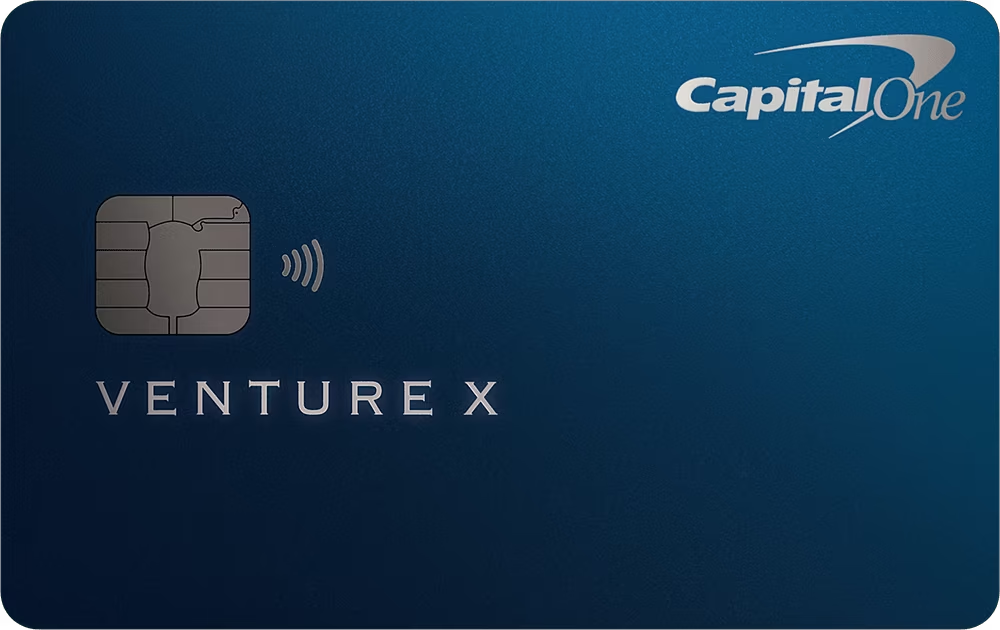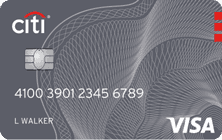Today’s blog post focuses on maximizing credit card rewards by building a Dynamic Duo or Trio in your wallet! Even high-end credit cards with rewards will have shortcomings and drawbacks. By pairing your top-of-wallet credit card with one or more additional reward credit cards that can complement and synergize with the other, you can maximize your credit card rewards strategy.
The perils & dangers of credit cards
Credit Cards are a powerful source of optimization and elevated personal finance, but I want to begin with a heavy word of caution. Credit card usage for rewards ONLY makes sense if you pay off your FULL balance EACH and EVERY month. Period. If you can’t do this, you’ll lose and would have been significantly better off never touching a credit card in the first place.
If you have credit card debt (I.E. You’re carrying a balance month-to-month, the 80-20 solution is to prioritize getting out of it as soon as possible. You need a plan to repay your debt as optimally as possible, which is why I advocate for the Debt Avalanche method.
With significant credit card debt, building strong personal finances is nearly impossible until you’ve dealt with the problem. In another blog post, I’ll write about the optimal ways to pay off various debts.

Now, with that out of the way… If you don’t have credit card debt, can responsibly use a credit card and only use it to buy what you can afford to pay off every month, and are committed to doing this for the rest of your life, let’s talk about optimizing credit cards–specifically building your perfect dynamic duo (or trio) of cards that synergize well together and can help you maximize the rewards on your day to day spending.
Credit cards are the chainsaws of personal finance. Use them well, and they are a tool that can help you achieve your goals. Use them poorly, and they have the power to ruin your life.
Building your dynamic duo | top-of-wallet & utility

As I mentioned in my first primer, building a robust credit card reward strategy is an iterative process. As you build the habits that will help improve your credit and finances over time, you will have access to better and better credit cards. The credit card that meets your needs today may not be the credit card that meets your needs tomorrow.
Even the best credit cards have some limitations and weaknesses. But fortunately, those limitations aren’t always the same for every credit card. That’s why it almost always makes sense to have and use more than one credit card when trying to optimize rewards.
I break the roles of a Dynamic Duo, trio, or even quartet+ into two categories: Top-of-Wallet, and Utility.
This distinction is quite simple. You should have a top-of-wallet card that will be used for everyday purchases across the broadest number of categories. This will be your primary card and the one you are trying to accrue the most rewards on. Then, you should have at least one utility card that can help fill in the shortcomings of the top-of-wallet card.
It’s also important to note that your top-of-wallet card may change more often than you’d think, especially if you are trying to max out a bonus welcome offer on a new card by hitting a certain spending threshold.
Understand credit card rewards sign-up bonuses
Credit card welcome offers are usually quite simple. They offer a reward if you sign up and hit a certain level of spending in your first few months of owning the card. It’s common to find introductory welcome offers in the $100-$500 range for a low spending threshold on most cards.
High-end premium cards (usually ones that carry annual fees) will have much better welcome offers, but usually higher spending thresholds to accompany it. My Venture X, for example, required $4,000 of spend within three months to qualify for the hefty 75,000 mile welcome bonus with a potential value of over $1,000.
I would never advocate spending more than you can afford to hit a welcome offer. Ideally, you would already know your average monthly spending and determine if it was realistic and comfortable for you to achieve the welcome offer bonus before applying for the card.
Once you’ve hit a welcome offer bonus threshold, maybe that top-of-wallet card then moves down the totem pole and joins your roster in the utility slot.
When building a Dynamic Duo, consider your credit score and what kind of cards you will be eligible for. Depending on how your credit card reward strategy is shaping up, you may not want to pay an annual fee for a premium card (even if you are able to profit). These fees can be expensive, and you’ll have to work to make sure you can capture enough value to justify the expense. When cutting expenses, this can be challenging and make you feel compelled to spend.
Determine if you want to pursue a cash-back or travel strategy or a blend of both
If you’re like me, you may want a blend of both. Oftentimes, you can find more Dynamic Duo synergies if you have one cash back and one travel card.
Determine the best credit cards that will work well for your reward strategy. Start with trying to find your top-of-wallet card then exploring utility cards from there. Your top-of-wallet card should offer the most value across the typical categories of everyday spending. Having a higher ‘everything else’ category reward percentage also helps a lot. Make sure you qualify for any cards you are interested and that you will come out ahead with the rewards if you choose an option that has an annual fee.
Look for the drawbacks of your top-of-wallet card. It can be helpful to explore many different credit cards to better identify weaknesses if you’re not sure where to start.
Identify your top-of-wallet card’s weaknesses. Now look for cards that turn its weaknesses into strengths. Try to benchmark rewards across a number of card offerings and try to find utility cards fill in the gaps. For example, if your top of wallet card only offers 1-2% on dining and you enjoy dining out from time to time, try to find a utility card that offers 3+% in this category.
My Dynamic Trio consists of the Capital One Venture X (Top-of-Wallet), the American Express Blue Cash Preferred (Utility), and the Citi Costco Anywhere (Utility).



The Venture X has a $395 annual fee but simplifies travel rewards compared to many other premium offerings from behemoths like Chase and AMEX. It is also a Visa Infinite card, so it has a lot of premium features that come with that level of base product offering. Outside of bonuses and recurring benefits to the card, here is the reward structure for purchases:
| Expense Category Reward | Reward Cash Back % |
| Hotels and Resorts | 10% |
| Flights | 5% |
| Everything Else | 2% |
Since Miles are primarily used toward travel, my strategy with this card is to be able to use it to book free or reduced vacations and travel for my family. The miles never expire, so I can work to accumulate them and reduce the cost of travel in the future. I have a two-month-old newborn at the time of writing this post, so we won’t be traveling much until at least next year. More miles for the future! 🏖️
💡💳 If you’re looking for an excellent premium travel credit card that can serve well as a Top-of-Wallet credit card for maximizing rewards, I highly recommend the Capital One Venture X. Get 75,000 bonus miles with the intro offer (a reward value worth $750+) Apply and help support the blog using my sign-up link.
The utility cards in my Dynamic Trio are the Costco Anywhere Visa and American Express Blue Cash Preferred. It’s no secret that I’m a Costco fanatic. As a personal finance nerd, there’s just so much value to capture at Costco across an impressive catalog of products and services. I can buy great things for my family and enjoy savings across the board.
Here’s how my reward structure breaks down on the Costco Anywhere Visa:
| Expense Category Reward | Reward Cash Back % |
| Gas (up to $7,500 year in purchases) | 4% |
| Restaurants, Bars, Coffee Shops + Travel | 3% |
| Costco Purchases | 2% |
| Everything Else | 1% |
And the American Express Blue Cash Preferred:
| Expense Category Reward | Reward Cash Back % |
| Groceries (up to $6000 in purchases a year) | 6% |
| Streaming Services | 6% |
| Gas + Transit | 3% |
| Everything Else | 1% |
Now we need to put it all together by putting together a table of how we will use each card in the Dynamic Duo or Trio. Committing your rewards spending strategy to memory will allow you to effortlessly determine which card you should use in any purchase. When I combine all three card reward structures taking only their strengths and omitting weakness categories, my spending across my Dynamic Trio looks like this:
| Expense Category Reward | Reward Cash Back % | Credit Card |
| Hotels & Resorts | 10% | Venture X |
| Groceries (up to $6000 in purchases a year) | 6% | Blue Cash Preferred |
| Streaming Services | 6% | Blue Cash Preferred |
| Flights | 5% | Venture X |
| Gas (up to $7500 in purchases a year | 4% | Costco Anywhere |
| Ubers & Ground Transit | 3% | Blue Cash Preferred |
| Everything Else | 2% | Venture X |
Even with the occasional road trip baked in, my wife and I have yet to hit the $7,500 in annual gas spend on the Costco anywhere. In 2022, we made the decision to sell my Honda Civic (for more than I paid for it five years prior in college) and become a single-car family. So far, it’s worked extremely well for us and comes with a lot of annual savings.
Conclusion
In conclusion, I hope you can see all the powerful benefits of pairing reward credit cards to complement one another by creating a Dynamic Duo or Trio in your own wallet. Continue to build and improve your rewards strategy over time, and make sure you are always using credit cards 100% responsibly. When used properly, you can earn some amazing rewards on spending you were going to be doing anyway. These rewards compound over time and give you even more opportunity to save and invest for your future.








Comments